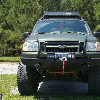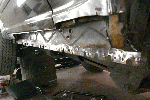Addicted
Elite Explorer
- Joined
- August 18, 2017
- Messages
- 53
- Reaction score
- 18
- City, State
- Northern California
- Year, Model & Trim Level
- 99 Mountainr SOHC 4.0 AWD
Hello, I'm preparing to install a gates water pump onto my 1999 Mercury Mountaineer 4.0L V6 engine. I purchased the following Fel-Pro gasket which does have a small bead of silicone on one side only.
Fel-Pro Water Pump Gasket
Should I use a sealant on the other side of the gasket? And if so would it be best used on the pump side or engine block side?
I'm also replacing upper and lower radiator hoses which are held using a tension band type hose clamp. Similar to the one in the photo below.

Is it OK to reuse these bands? They are the original bands and have never been removed. It's possible they still hold a strong tension?
Or is it best to replace these also?
And if so, I do prefer using the same tension band type clamps however I haven't been able to find them online for the radiator hose size.
Any help here on both these concerns would be greatly appreciated.
Fel-Pro Water Pump Gasket
Should I use a sealant on the other side of the gasket? And if so would it be best used on the pump side or engine block side?
I'm also replacing upper and lower radiator hoses which are held using a tension band type hose clamp. Similar to the one in the photo below.
Is it OK to reuse these bands? They are the original bands and have never been removed. It's possible they still hold a strong tension?
Or is it best to replace these also?
And if so, I do prefer using the same tension band type clamps however I haven't been able to find them online for the radiator hose size.
Any help here on both these concerns would be greatly appreciated.










